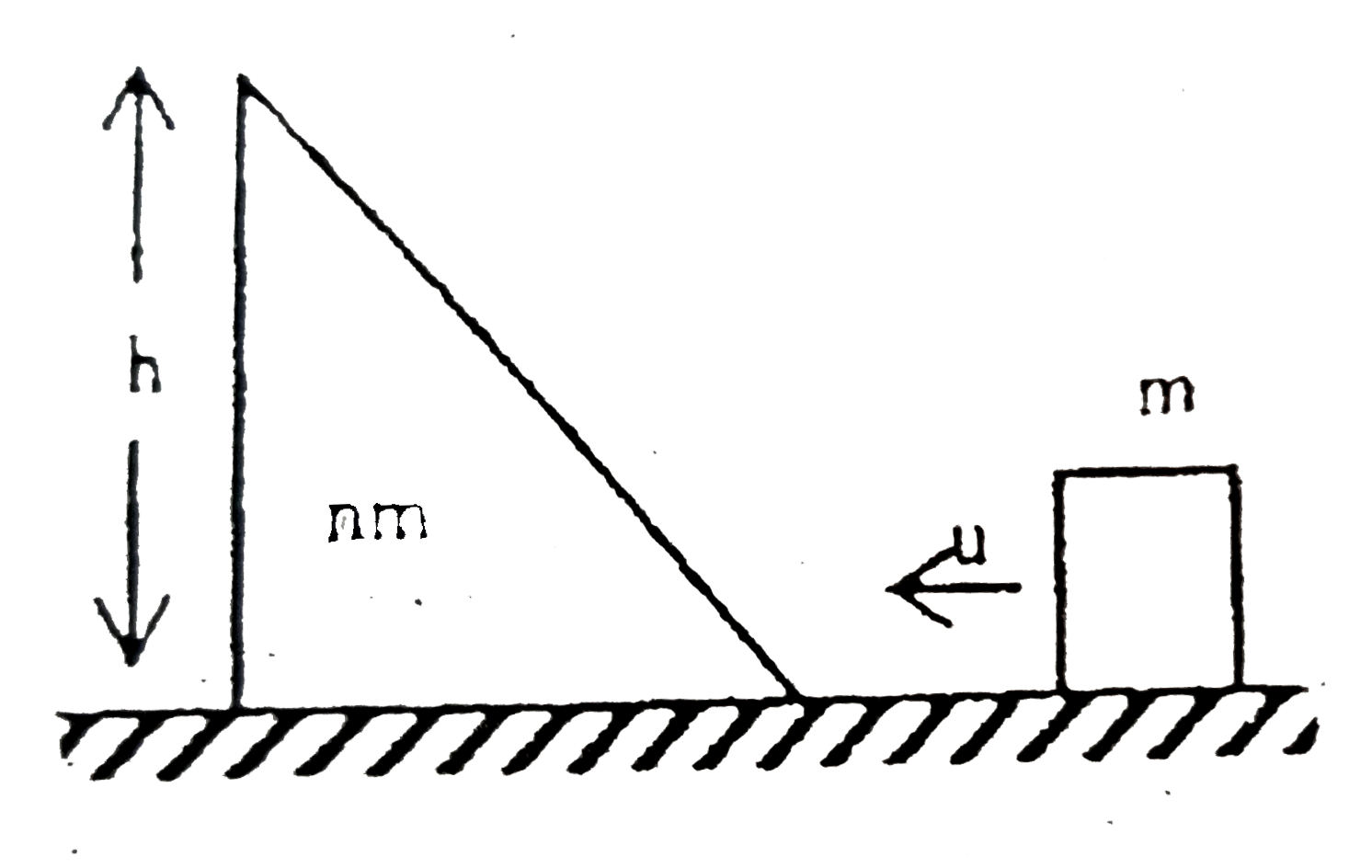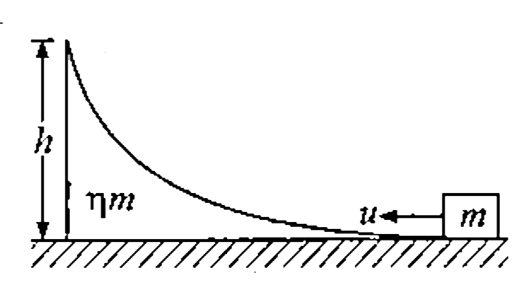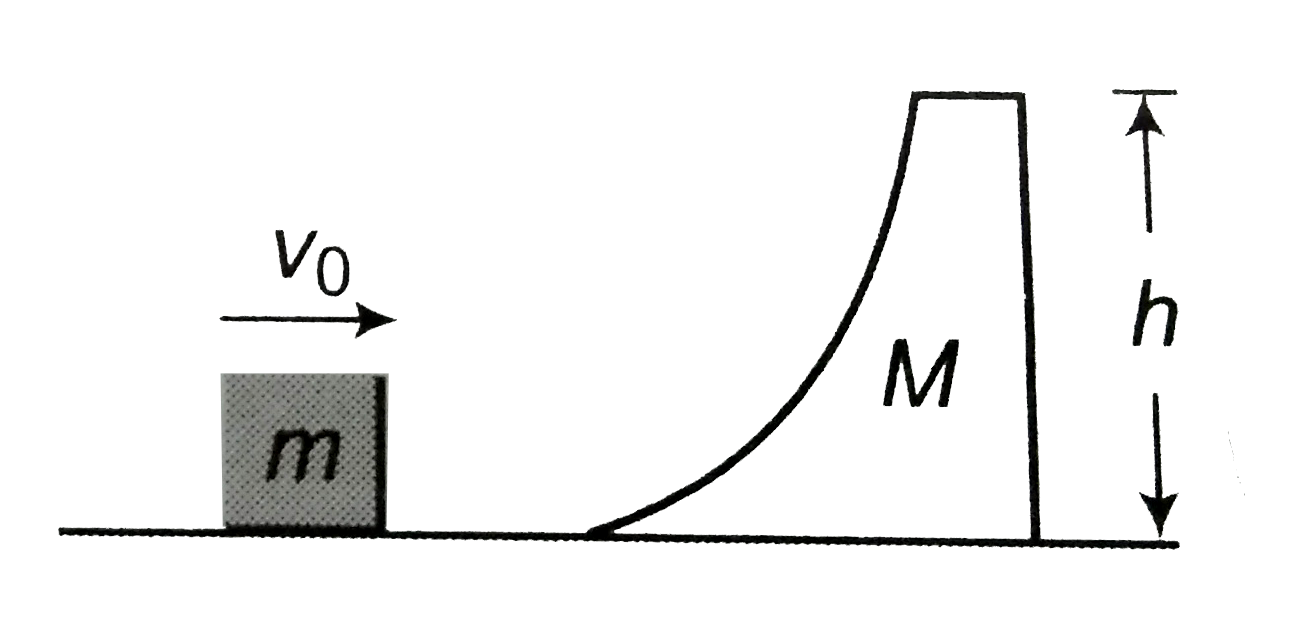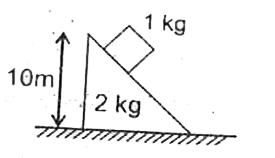A block of mass 1kg 'is pushed towards a movable wedge of mass 2kg and height h=30cm, with a velocity u=6ms. Before striking the wedge it travels 2m on a rough horizontal portion. The velocity is just sufficient for the block to reach the top of the wedge. Assuming all the surfaces are smooth except the given horizontal part and collision of block and wedge is jerkless, the friction coefficient of the rough horizontal part is (Round off the answer to two decimal places)
'(##CEN_KSR_PHY_JEE_C08_E01_015_Q09##)'
The correct Answer is:0.68
Topper's Solved these Questions
Similar Questions
A block of mass 1kg is pushed on a non-movable wedge of mass 2kg and height h=30cm with a velocity u=6m/sec. Before striking the wedge it travels 2m on a rough horizontal portion. Velocity is just sufficient for the block to reach the top of the wedge. Assuming all surfaces are smooth except the given horizontal part and collision of block and wedge is jerkless, the friction coefficition of the rough horizontal part is :

View SolutionA block of mass m is pushed towards a movable wedge of mass nm and height h, with a velocity u. All surfaces are smooth. The minimum value of u for which the block will reach the top of the wedge is

View Solution
Knowledge Check
A block of mass 1kg is pushed on a movable wedge of mass 2kg and height h=30cm with a velocity u=6m/sec. Before striking the wedge it travels 2m on a rough horizontal portion. Velocity is just sufficient for the block to reach the top of the wedge. Assuming all surfaces are smooth except the given horizontal part and collision of block and wedge is jerkless, the friction coefficition of the rough horizontal part is :
 A0.125B0.377C0.675D0.45
A0.125B0.377C0.675D0.45A block of mass 1kg is pushed on a movable wedge of mass 2kg and height h=30cm with a velocity u=6m/sec. Before striking the wedge it travels 2m on a rough horizontal portion. Velocity is just sufficient for the block to reach the top of the wedge. Assuming all surface are smooth except the given horizontal part and collision of block and wedge is jerkless, the friction coefficient of the rough horizontal part is :
An observer having a gun observes a remotely controlled balloon. When he first noticed the balloon, it was at an altitude of 800m and moving vertically upward at a constant velocity of 5m/s. The horizontal displacement of balloon from the observer is 1600m. Shells fired from the gun have an initial velocity of 400m/s at a fixed angle θ(sinθ=3/5and cosθ=4/5). The observer having gun waits ( for some time after observing the balloon) and fires so as to destroy the balloon. Assume g=10m/s2. Neglect air resistance.
 A0.125B0.377C0.675D0.45
A0.125B0.377C0.675D0.45A block of mass m is pushed towards a movable wedge of mass nm and height h, with a velocity u. All surfaces are smooth. The minimum value of u for which the block will reach the top of the wedge is
 A√2ghBn2ghC√2gh(1+1n)D√2gh(1−1n)
A√2ghBn2ghC√2gh(1+1n)D√2gh(1−1n)
A block of mass m is pushed towards a movable wedge of mass nm and height h, with a velocity u. All surfaces are smooth. The minimum value of u for which the block will reach the top of the wedge is

View SolutionA small block of mass m is pushed towards a movable wedge of mass ηm and height h with initial velocity u.All surface are smooth. The minimum value of u for which the block will reach the top of the wedge:

View SolutionA small block of mass m is pushed towards a movable wedge of mass ηm and height h with initial velocity u.All surface are smooth. The minimum value of u for which the block will reach the top of the wedge:

View SolutionA block of mass m is pushed towards the movable wedge of mass M and height h, with a velocity v0. All surfaces are smooth . The minimum value of v0 for which the block will reach the top of the wedge is

View SolutionA block of mass 1 kg is released from the top of a wedge of mass 2 kg. Height of wedge is 10 meter and all the surfaces are frictionless. Then

View Solution
